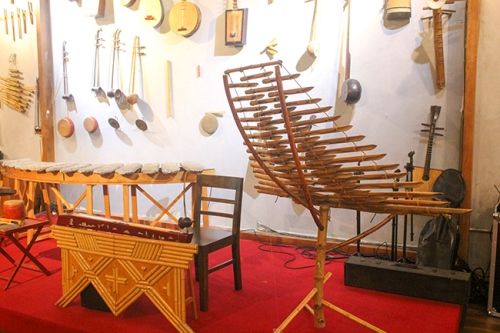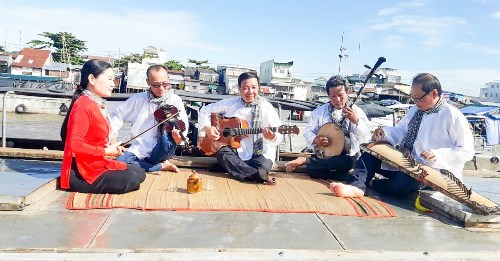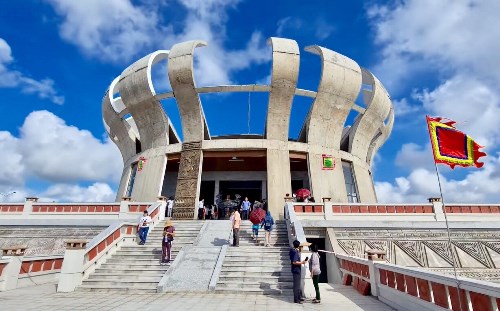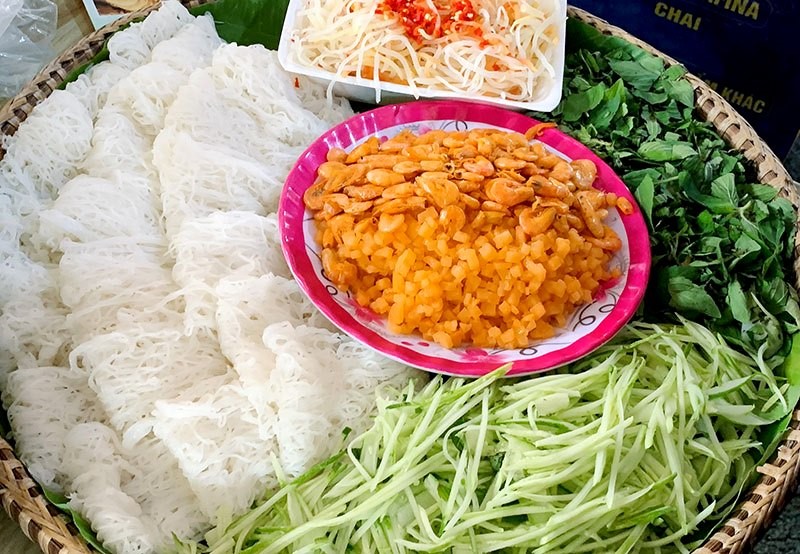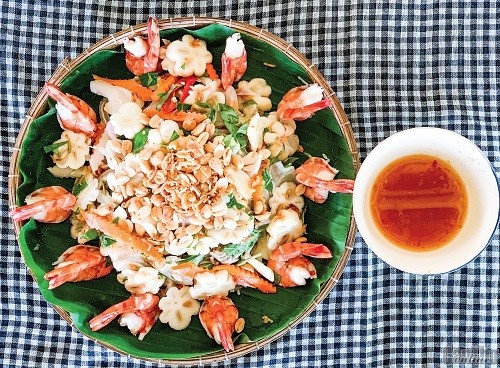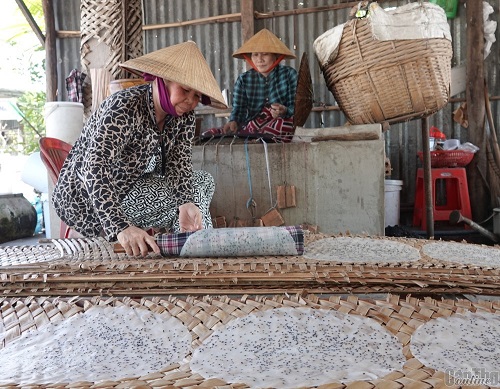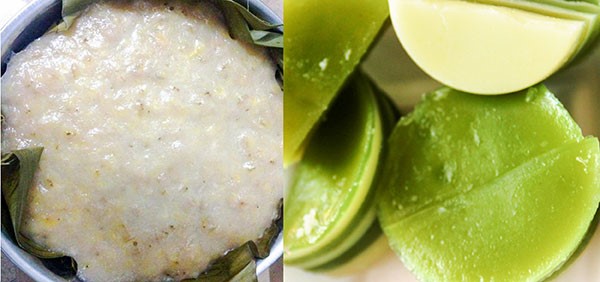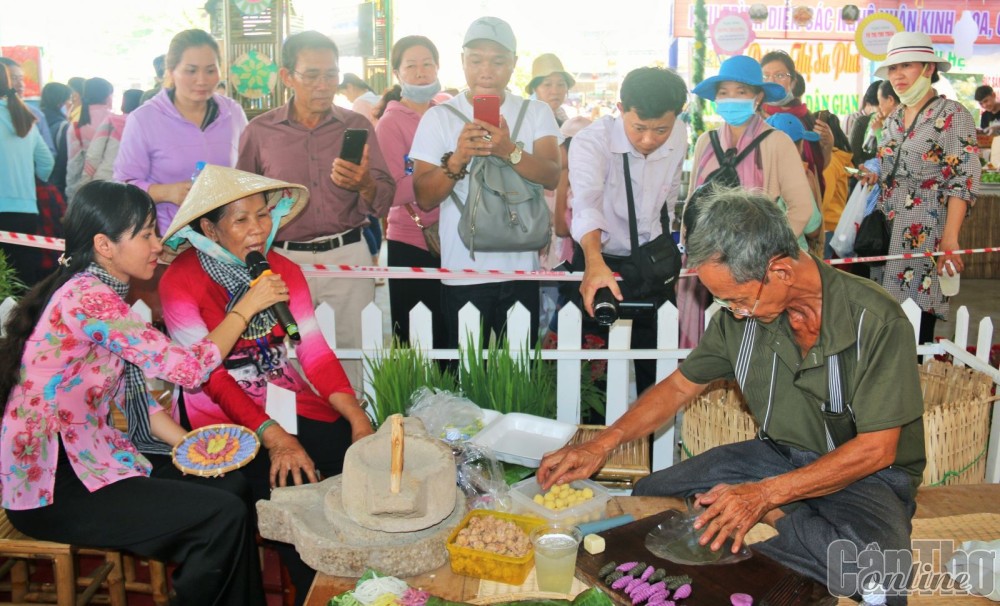Against the unilateral war of the U.S (1960-1961)
Assessing the reactionary nature of the enemy, according to the policy of leaders, the Provincial Party Committee bury and reserved weapons bunkers to be ready when there was a turn of events. In early 1955, the enemy overturned and failed to implement the Geneva Agreements, began rebuilding the reactionary military and government apparatus, and propaganda to deceive and threaten to terrorize the people to join reactionary organizations. Faced with that situation, the Provincial Party Committee mobilized the people of the whole province to persistently fight for the implementation of the Agreement.
After establishing the government at all levels, the U.S - Diem plotted to attack the denomination armed forces in order to unify the army. Religious and denomination organizations fought back and declared their separation from the U.S - Diem, which was favorable for us to take advantage of their cooperation with the revolution.
On October 26, 1956, the U.S put Ngo Dinh Diem as President and set up a puppet government "Republic of Vietnam", implementing policies of oppression and exploitation of the people. The people of Can Tho showed a negligent attitude and did not cooperate with the U.S. - Diem government. Ngo Dinh Diem blatantly declared his non-implementation of the Geneva Agreements, opposed the General Elections Consultation, and openly exhorted "denounce and extermination of the communists", directly raiding revolutionary bases, terrorizing the people, promulgating the10/59 law to put the communists outside the law, dragging guillotines everywhere to implement the motto "it is better to kill by mistake than to miss" to terrorize the revolutionary spirit of the people. In Tay Do, the U.S. - Diem rushed to establish Vi Thanh - Hoa Luu dense area on the blood and bones of thousands of people, causing deep resentment among the people.
Can Tho Provincial Party Committee directed to increase of armed activities in the name of a denomination. In December 1959, the Tay Do armed unit was established; in the early 1960s, launched a mass network movement to advance to the climax of political, armed insurrection to break the spy apparatus at the foundation, gaining the people's mastery in the countryside, formed 3 arrows (political, armed, military) to attack the enemy on all fronts. In 1960, these three main arrows attacked and destroyed the enemy in many battles both armed and political in the whole province. The 1960 Dong Khoi Movement of the people of Can Tho contributed to the defeat of the U.S imperialist's unilateral war with the South.
Against the "special war" strategy of the U.S (1961-1965)
The victory of the Dong Khoi movement pushed the enemy into a passive position, in 1961, the U.S. changed its strategy and switched to a special war with the Staley-Taylor plan to pacify the South in 18 months with the national policy of "strategic hamlet" as the backbone, setting up a series of units and corps to consolidate the ruling apparatus, expanding military bases (Tra Noc airport, Binh Thuy military port...), launching raids in the revolutionary area. Can Tho Provincial Party Committee strengthens commanding officers, builds armed forces and guerrillas, and at the same time promotes political struggle and pacification, combats hostile plots of the enemy. In 1961, the Committee of the National Front for the Liberation of Can Tho was established, leading the people's struggles in the province to gain great achievements: demonstrations demanding compensation for the lives of those killed indiscriminately by the enemy, armed attacks that destroyed hundreds of enemies, confiscation of weapons. At the end of 1962, the U.S. plan to pacify the South in 18 months ended without results, the initial failure of the "special war" strategy.
In 1963, in response to the movement of "emulating the North hamlet, killing the enemy to make merit", Can Tho's army and people stepped up three prongs to encircle and destroy, force surrender, and force the withdrawal of many enemy posts, creating conditions for the masses revolt to destroy many strategic hamlets: thoroughly destroy the Mot Ngan area, strategic hamlets of Cai Nai, Cai Da, Cai Son, Cam canal, destroy Rach Tra and Tong Cang forts, oppose the construction of Tra Noc airport... Coordinated with the revolutionary movement in the countryside, the movement to destroy the U.S in Can Tho town was also very active.
November 11, 1963, the U.S coup the puppet government Ngo Dinh Diem, officially jumped into the invasion of Vietnam. Seizing the opportunity of the enemy's internal turmoil, the army and people coordinated to attack and destroy the Phu Xuan I, Phu Xuan II, Tam Vu and Kinh Xang forts and support the insurgents to destroy strategic hamlets in many places... the liberated area was expanded, launched the movement to build fighting hamlets. The U.S Staley-Taylor plan failed. The South Vietnamese army and people in general and Can Tho province in particular faced new tasks: defeat the Johnson-Mc Namara plan and "pacify the key", drain the enemy's life force and urgently build up our forces in all aspects.
Provincial armed forces coordinated with guerrillas to attack and destroy Cay Me (O Mon) forts, Giao Dan and Binh An commune (Truong Lac) and Kinh Ngang - Thoi Dong posts, and coordinate with military forces to destroy 2 bunkers of Rach Goc Bridge and Vinh Cheo Fort (Vi Thanh, Long My). In the town, the armed and political struggle of the masses was also very active
The revolutionary movement in Can Tho from 1961-1965 developed comprehensively, defeated the national policy "strategic hamlet" and "special war" strategy of the U.S, creating a premise for the later stages of the resistance war.
Against the "local war" of the U.S imperialists (1965-1968) – the General offensive and the uprising Tet Mau Than 1968
The "special war" failed, the US hastily sent combat troops of the US and its vassal countries to join the fight in the South of Vietnam, conducting "Local War" in the South and "War of Destruction" in the North. From 23,300 U.S soldiers in 1964 to 1968, it increased to 543,000 soldiers and 550,000 puppet troops, in addition, the U.S. also reinforced the most modern war equipment at that time for conducting the war in Vietnam. The strategic objective is to find and destroy our main army and promote the program of "rural pacification". Can Tho was identified as a key battlefield of the Southwest region, the U.S put here major headquarters such as: consulates, intelligence agencies, military zones, military ports and airfields, and large ammunition depots, radio, and television stations set up in Can Tho.
From 1965 to 1967, the US committed 3 major massacres: bombing of Ong Hao church, the massacre on Cau Nhiem river, and the massacre in Cai Cao killed thousands of people mainly women, the elderly, and children.
During the two years 1966-1967, the armed forces of the three provinces of the province coordinated with the forces of the Zone continuously to destroy the enemy:
- March 30, 1966, the commandos of Can Tho citadel and artillery bombarded the "Cuu Long" stadium, hundreds of U.S soldiers died.
- July 7, 1966, December 19, 1966 and May 8, 1967, artillery shelling at Tra Noc airport destroyed dozens of aircraft and killed hundreds of the U.S - Puppet soldiers.
- In October 1967, the commandos coordinated with the local base to attack the National Police Command of Military Region 4, killing dozens of enemies, including 4 U.S advisors.
- In December 1967, the army stormed the US Consulate, killing hundreds of Americans. In the same month, we set fire to the gasoline depot on 19 Road, burning 2 million liters of gasoline.
Along with the vibrant armed movement, the mass movement also flourished with a series of demonstrations against the enemy government. During this time, military mobilization also developed strongly in both quality and form. Besides the fierce fighting, the production and construction situation of the people's life has improved markedly.
In the dry season of 1967, the enemy's two-pronged plan (search-destroy and pacify) failed, and the enemy fell into a passive position. The Politburo of the Party Central Committee decided to "transform the revolution of South Vietnam into a period of gaining decisive victory". According to the directive of the Party Committee, Can Tho province urgently prepared mentally and physically for the general offensive and uprising in Spring 1968, Can Tho province and Can Tho town were selected as the No.1 key point. According to the plan, our main force will join the people to simultaneously attack and rebel in Can Tho city, Vi Thanh town, towns, and rural outposts on the night of the 30th and dawn of the first day of the Tet Mau Than 1968.
As planned, on the night of the 30th to the first day of the Lunar New Year, the gunfire resounded instead of fireworks to welcome New Year's Eve. In the beginning, the commando team of Can Tho city attacked the police unit at Dau Sau bridge, paving the way for Tay Do battalion to split into two arrows to attack Can Tho city: one army hit the Consulate and the US intelligence agency, the other took over the Cultural area and the blower zone. The battle took place fiercely with the participation of the enemy's modern air force and artillery units, our forces still tenaciously clinging to the battle. In the inner city of Can Tho, secret guerrillas and our base spread leaflets announcing the arrival of the revolutionary army to liberate the city. After 4 days and nights of fierce and brave fighting, on the night of the 4th and 5th we withdrew from the inner city, and stayed in the suburban to continue fighting, shelling the enemy's key points and defensive clusters. On the night of the 7th, our two battalions coordinated with our three armies in the enemy's ranks to attack the Lo Te airfield and the barracks, killing hundreds of people and destroying many treasures and weapons. On the 8th day of the lunar calendar, the enemy counterattacked fiercely, fighting took place at Vong Cung Road until May 1968, when we withdrew from Vong Cung but still remained in Chau Thanh to continue fighting. Simultaneously throughout Can Tho province, the fighting took place fiercely in a tug-of-war position.
During the 1968 Tet Offensive and uprising, in Can Tho province, we eliminated 25,000 enemy soldiers, collected 600 guns of all kinds, destroyed and forced to withdraw 56 posts, shot down and destroyed hundreds of aircraft, liberated 4 communes and many hamlets, gained mastery for over 100,000 people (accounting for 2/3 of the province's population). The general offensive dealt a decisive blow to bankrupt the "local war" strategy, forcing the US to de-escalate the war and accept negotiations.
However, after the Tet Mau Than, due to a change in direction, our forces suffered very heavy losses, greatly affecting the following battle period.
Against the "Vietnamization" of the US imperialists (1969-1973)
The US switched to a strategy of "Vietnamization", turning the invasion into a civil war "internecive" of the Vietnamese people, replacing the US army and its vassals with an increasingly large puppet army. After the Tet Mau Than, our troops suffered a heavy defeat, the enemy recaptured most of the important positions. Although in an entrenched position to consolidate and rebuild the revolutionary base, the battle of the Can Tho army and people was still very active on the armed and political fronts. In just two years, 1971-1972, after consolidating forces, Can Tho's army and people eliminated tens of thousands of enemy soldiers, collected thousands of guns, and forced the withdrawal of more than 30 outposts.
At the end of 1971, the Politburo decided to launch the 1972 strategic offensive in the Southeast, Tri Thien and Tay Nguyen directions and form a general offensive across the region to destroy the enemy and expand the liberated area. At the Can Tho front, our army and people won a resounding victory, eliminated tens of thousands of enemies, completely liberated 4 hamlets, demolished 152 hamlets, destroyed 163 forts, and all Party and revolutionary bases were consolidated and developed. The 1972 victory of the whole country in general and Can Tho in particular forced the U.S. to sign the Paris Agreement on January 27, 1973. However, the US blatantly sabotaged the agreement shortly after, organizing operations to "overwhelm the territory" to "pacify encroachment" on our liberated areas. The Can Tho Party Committee urgently discussed the plan to fight the US plot to sabotage the agreement, all the human and material resource were devoted to the war, at the end of 1973, on the battlefield of Can Tho, we defeated the pacify encroachment plot of the U.S.
Towards the complete liberation of Can Tho province
In the two years 1973-1974, with three fronts and three armies, Can Tho's army, and people won great victories, creating a premise for the complete liberation of Can Tho province.
On December 5, 1974, we opened the campaign, the main force and local forces coordinated closely to simultaneously attack the enemy's military subdivision in Can Tho, destroying a large amount of the enemy life force; The war on the political front was also very exciting, and thousands of people joined forces with the armed forces to surround the outpost and participate in the campaign.
By April 1975, Saigon's puppet power was increasingly weak and in danger of collapse, and had to ask for aid from the US. The revolutionary opportunity was ripe, and the Can Tho Provincial Party Committee implemented the Resolution of the Party Central Committee, determined to liberate Can Tho province, as part of the plan to completely liberate South Vietnam.
On April 26, 1975, as soon as Thieu resigned, the Southwest Region Party Committee issued an attack order and placed Can Tho as the focal point, our forces divided into two directions: one army approached the Can Tho road to prepare to enter the city, the other went to Xom Chai to prepare to cross the river into the city.
On May 28, 1975, the American consulate in Can Tho fled, leaving the puppet forces in a state of panic. Throughout the day and night from April 28-29, 1975, our main troops marched through the lines and entered the city.
At 10:30 a.m. on April 30, 1975, Duong Van Minh announced his surrender in Saigon, in the localities of Can Tho province, the people rebelled to seize power. Together with the main forces entered to liberate Can Tho, until May 4, 1975, Can Tho province was completely liberated, successfully ending the resistance war against the US.
Translated by Hoang Dat





